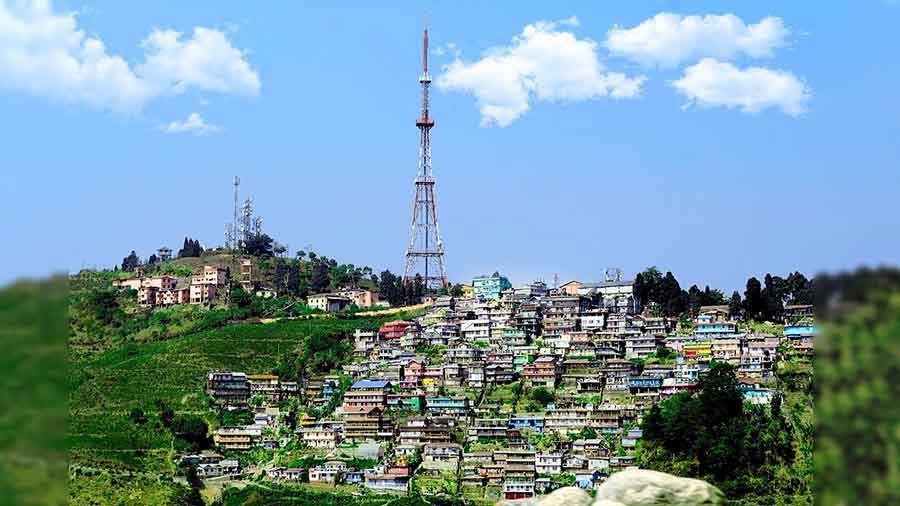Just over 30km from the bustling Darjeeling, Kurseong is sometimes overlooked for its more popular neighbour. Yet, the hill town has its own charm with magnificent views of Mt. Kanchenjunga and the famous Darjeeling Himalayan Railway, or Darjeeling toy train, that winds its way through the town. Kurseong’s serpentine roads are hemmed by scenic tea gardens and montane forests full of orchids that bloom post monsoon.
In the past, Kurseong was a larger region and part of both Sikkim and Nepal at different times. It was restored to Sikkim after the Gurkha War and treaty of Titalia in 1817. In 1835, the Chogyal of Sikkim, Tshudpud Namgyal, provided the British with an area in Kurseong when they decided to develop Darjeeling as a sanatorium.
The very early settlers of this hill town were from the Lepchas community and Kurseong’s name comes from the Lepcha word kurson-rip for the small white orchid that was once abundant in the region and still blooms today.
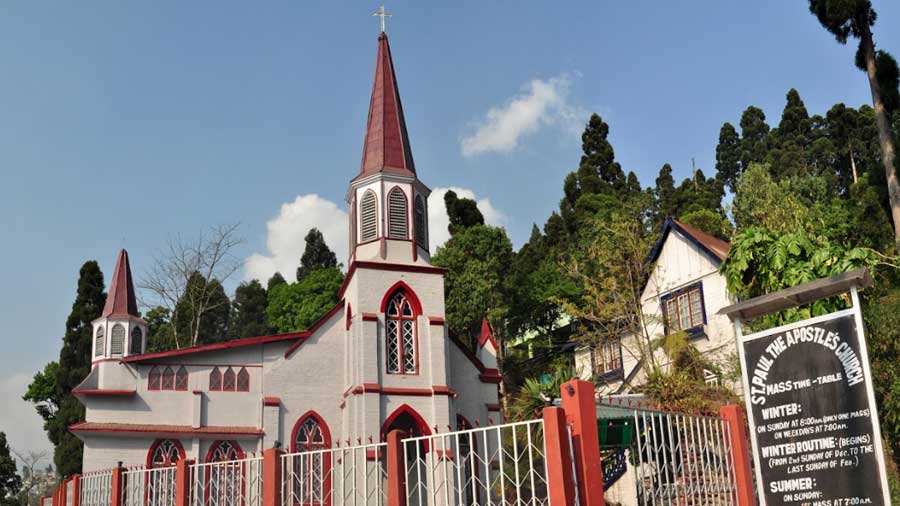
St. Paul, The Apostle’s Church, is one of the prettiest in Kurseong Amitabha Gupta
Mountain charms of the East
A tour of Kurseong is incomplete without a factory tour of the Makaibari Tea Estate, where you can see the tea-making process and attend a tasting. The other two well-known estates of the region are not open to tours, but you can drive along both Ambootia tea gardens and Castleton estate, earlier known as Kumseri, to soak in the sights.
The drive through Ambootia takes you to a Shiva temple that looks like a monastery. Named after the nearby estate, the temple is revered by locals in Kurseong and Darjeeling.
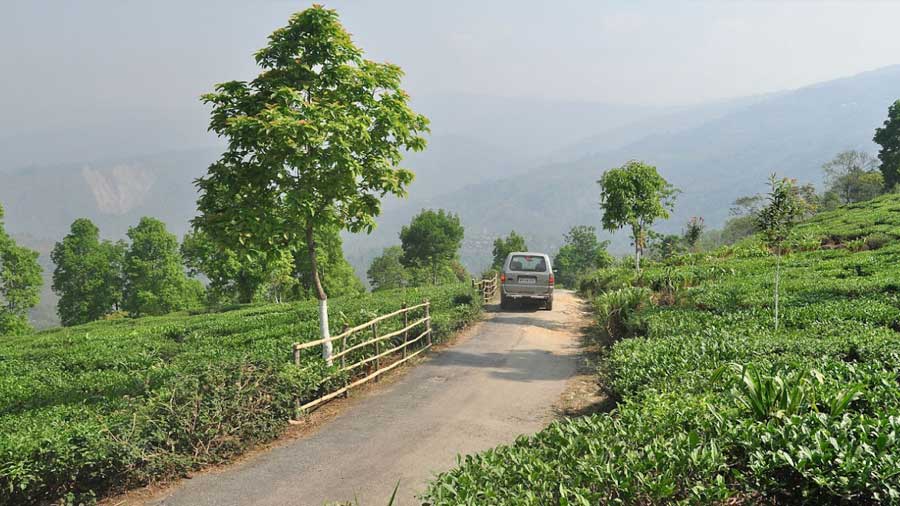
Driving through Ambootia tea gardens Amitabha Gupta
On the way from Ambootia to Castleton, on Pankhabari road, is the Kurseong cemetery, also known as the St. Paul cemetery. Still active, it has graves dating back to the 1800s and offers a glimpse into the life of people who lived here during the Raj. Keeping with the style of 19th and 20th century graves, some tombstones have sculptures adorning them such as the almost life-size angel atop that of Harold Steele, who died in 1929.
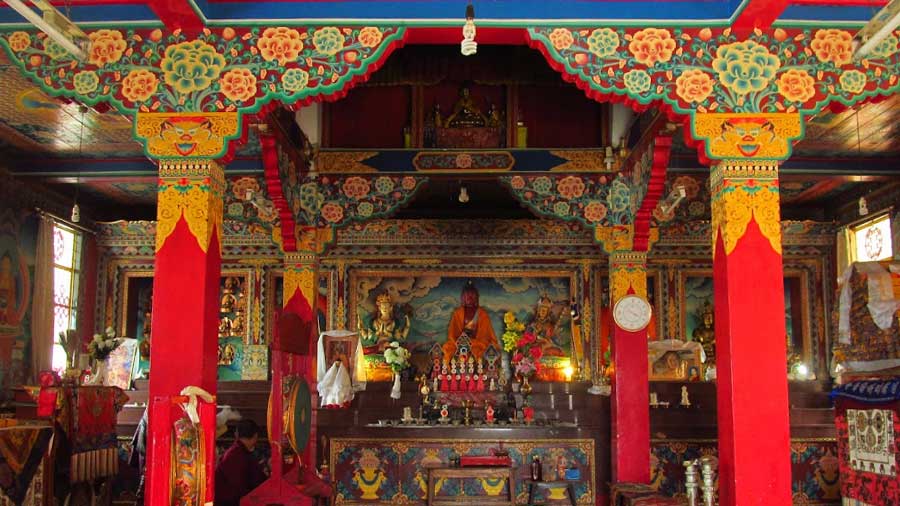
Tibetan paintings and ‘thangkas’ in the shrine room of Tashi Samten Ling Monastery Amitabha Gupta
A short drive away is St. Paul, The Apostles Church, one of Kurseong’s most beautiful churches. Established in 1905, it was named for the then Archbishop of Calcutta, Rt. Rev. Archbishop Paul Goethals. A short walk from St. Paul is Tashi Samten Ling Monastery, perhaps the oldest Buddhist monastery at Kurseong. Bright Tibetan style paintings and thangkas adorn the shrine room of this monastery built in 1925.
Colonial remnants
During the British era, some of the best residential schools were established in Kurseong. The Victorian buildings of these institutions that were managed by missionaries make up a fair share of the townscape and still have the nostalgia of a bygone era.
Some of these schools might let you walk in through the gate to get a glimpse of the facade during the holidays, but the stately buildings are visible from the road as you walk or drive through the town.
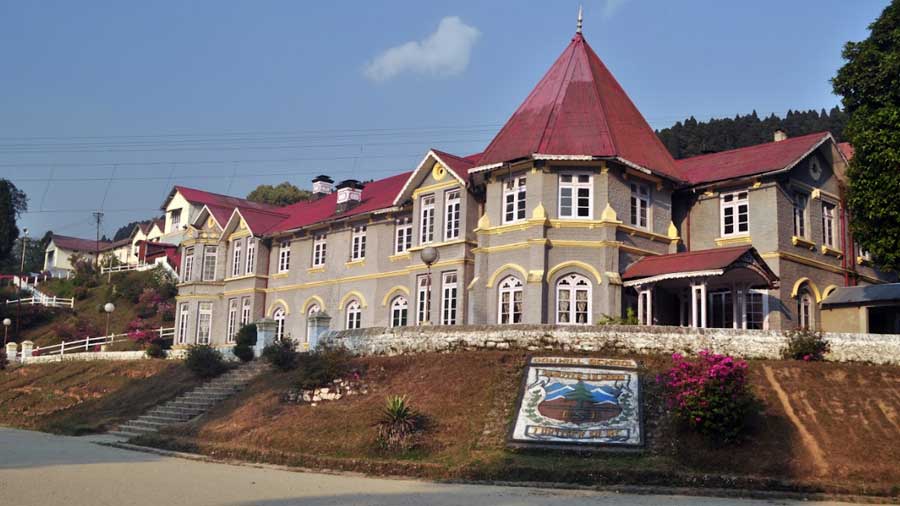
Dow Hill School was established in 1879 Amitabha Gupta
Perhaps the most well-known of Kurseong’s schools are Dow Hill School and Victoria Boys’ School. Believed to be named after local bird species called dow in the regional tongue, Dow Hill was established as a co-ed school in 1879. The mixed system was discontinued about a decade later and Dow Hill continued as a boys’ school for another 10 years until Victoria Boys’ School was established. Now, Dow Hill runs as a co-ed for primary and as a girls’ school for secondary sections.
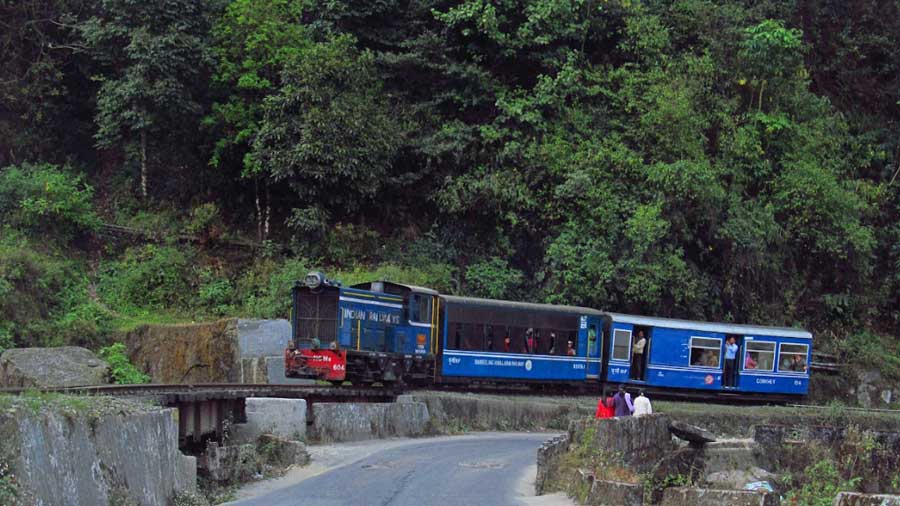
The Darjeeling Himalayan Railway ‘toy train’ from Kurseong to Ghum Amitabha Gupta
Picturesque meanderings
The hill route to Dow Hill is a picturesque one, favoured by hikers and couples alike. The hill is covered with a forest of towering pine trees and the mist rolling in between them creates a pretty picture. There is also an abandoned church along the way. Past the red-and-green facade of the school, there is a landscaped garden and children’s park named Dow Hill Park, which remains open till 5pm.
The drive downhill brings you to the bottom of St. Mary’s hill, where the St. John Berchman’s Church is located. The octagonal building with metal-sheet roofs was built in 1988.
A winding road from here leads to St. Mary’s Grotto. A statue of Mary sits within the cave and a spring flows from the side. You can walk or drive to the hilltop from the grotto passing by the Forest Rangers Training College which is another colonial-era mansion deserving a closer look.
The nearby Kurseong station is a stop on the UNESCO World Heritage Site Darjeeling Himalayan Railway. The morning ‘toy train’ departs around 7am and rumbles past the town, passing Sonada monastery before heading to the famous Batasia Loop at Ghum. Currently the route from Kurseong to Ghum is suspended due to the pandemic.
The Netaji connection
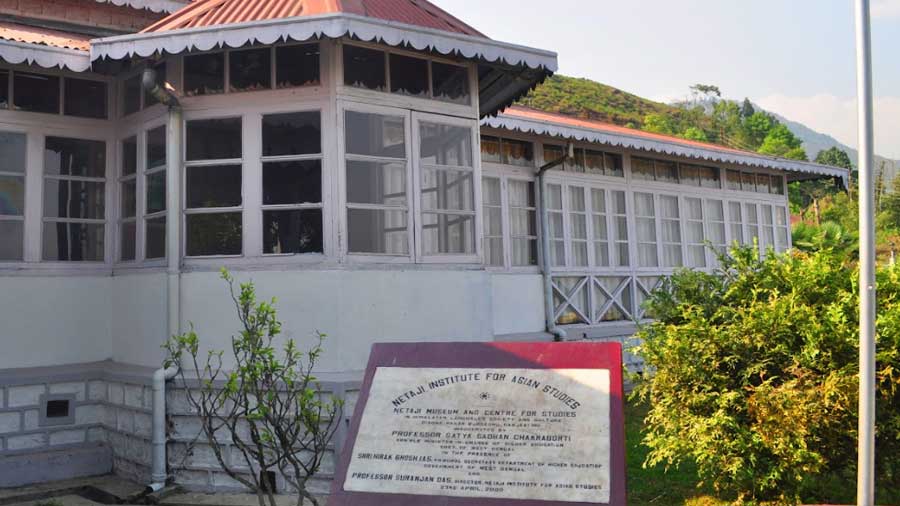
The Netaji Institute for Asian Studies and the Centre for Studies in Himalayan Languages, Society and Culture at Giddhapahar Amitabha Gupta
This small town in the Eastern Himalayas has a surprising connection with Haripura village near Kadod in Gujarat’s Surat district. They are connected by Bengal’s beloved Netaji Subhash Chandra Bose.
Haripura is probably familiar to many because of the Haripura Congress session of 1938 presided over by Netaji. In Kurseong’s Giddhapahar is Sarat Chandra Bose’s home, which has a connection to the Haripura session. Netaji was kept in internment here for seven months in 1936 and it is here that he drafted his historic speech of the Haripura Congress.
The Bose family visited this house till 1954, after which the building lay in neglect for over 40 years. In 1996, the Government of West Bengal acquired the house and handed it over to Netaji Institute for Asian Studies. At present it houses a museum and the Centre for Studies in Himalayan Languages, Society and Culture. The museum has an interesting collection including rare photographs and letters of Netaji, and is open to visitors from 9.30am to 4.30pm.
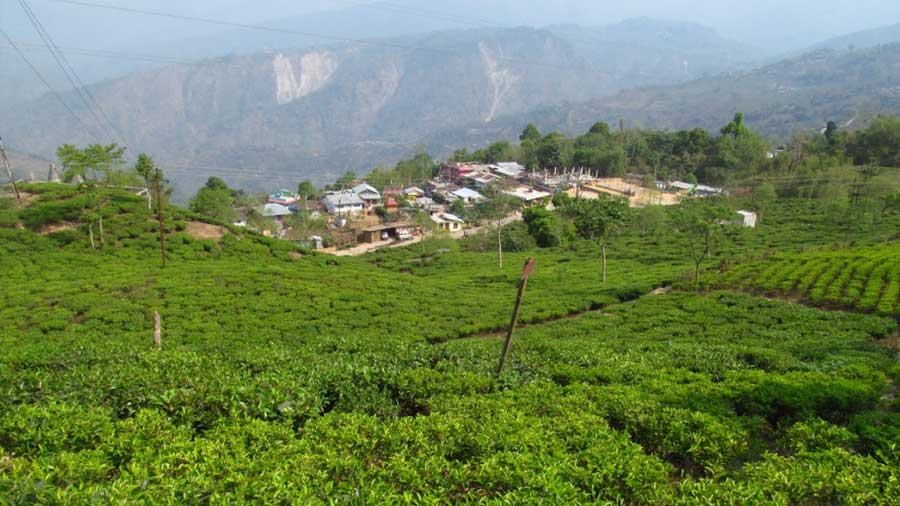
The hills of Kurseong are swathed with tea gardens Amitabha Gupta
Hilltop views
A walk to the popular tourist viewpoint of Eagle’s Craig can be rewarding, especially in the morning. The cliff-top location affords sweeping views of the town and a magnificent view of Kanchenjunga.
In the afternoon, a leisurely walk down Hill Cart Road can be refreshing too. You can stop for a cup of Darjeeling tea at the tea bar Chai Country inside heritage hotel Cochrane Place.
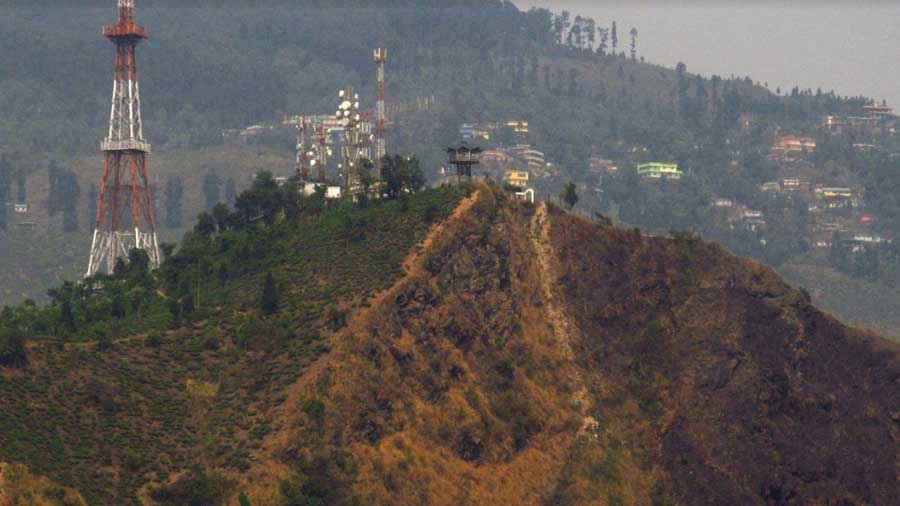
The popular tourist viewpoint of Eagle’s Craig Amitabha Gupta
- How to Go: Kurseong is about two hours by road from New Jalpaiguri station or from Bagdogra airport. Take the route via Pankhabari for a less busy and more scenic drive.
- Where to stay: Though fewer in number, Kurseong has its share of hotels to suit different budgets. Cochrane Place and Alita Hotels & Resorts are good options if you have a bigger budget while Nicandra Homestay and Amarjeet are some pocket-friendly options. There is also a West Bengal tourist lodge.
Amitabha Gupta is a travel writer and a photographer who specializes in heritage and history of West Bengal. His work has been featured in many magazines and newspapers — both online and offline. He also conducts heritage walks and tours in and around Kolkata.
